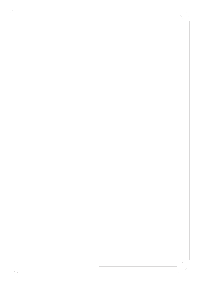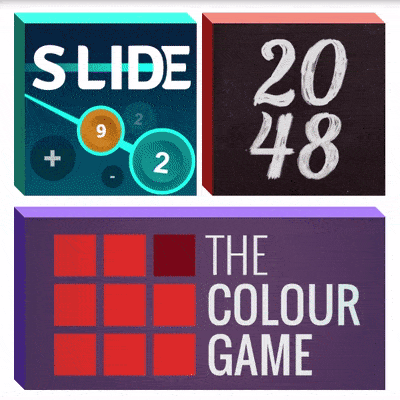005_Sudoku Style Puzzles
Sudoku and Sudoku-style puzzles
Place each of the numbers 1 to 9 into each of the rows, columns and bold-lined 3-by-3 boxes. You must also place the numbers in each dashed-line cage so that they add up to the given total.
The normal rules of Killer Sudoku apply, except, the usual 3x3 blocks have been replaced by irregularly shaped, coloured blocks (which must contain all the digits from 1-9).
The normal rules of Killer Sudoku apply. In addition, each coloured extra region must also contain all the digits from 1-9.
The normal rules of Killer Sudoku apply. In addition, both main diagonals (marked) and all cells of the same colour must also contain all the digits from 1-9.
The normal rules of Killer Sudoku apply. In addition, both main diagonals must also contain all the digits from 1-9.
9x9 and 12 x 12 formats
These Killer Sudoku puzzles have had the outlines of their cages removed, but the original rules apply, so that each row, column and 3x3 block should contain the digits 1-9. The sum of the digits for each missing cage is located, as usual, in the leftmost cell of the top row of that cage. No digit can be repeated within a cage, and there are no single cell cages.
The normal rules of Killer Sudoku apply. In addition, the grid is divided into coloured cells. Cells of the same colour must also contain all the digits from 1-9.
Usual sudoku rules apply. Also, the numbers in the shared set of 3 by 3 box is filled in identically, for both of the individual sudokus.
To begin, look at the digit which occurs most frequently in the grid. In which rows, columns and boxes is it missing? Also look at rows, columns and boxes which are almost complete – which numbers are missing and where could they go? The rest is up to you!
Complete the grid so that every row, column and 3x3 box contains the letters AEFGINRST in some order. One row or column contains a 7-letter word - what is it?
Each face is a separate Sudoku puzzle. The three adjacent 9x9 corner squares count as one 9x9 square shared in common.
Insert the numbers one to seven in each row and each column, taking care that no number is repeated in a particular row. The only symbols to guide you are the signs for “greater than” and “less than”.
Fill in the blank squares of the grid, using 1 to 9, without repeating any number in any run line. The lines must be filled in with numbers whichadd up to the total in the shaded box at the top or beginning of each line. A number in the bottom half of the shaded box gives a downwardstotal; in the top half, it’s a horizontal total.
In Japanese, hitori roughly translates to ‘leave me alone’, and you’ll understand why when you pick up the rules to this puzzle.
To complete the puzzle, every row and column must not contain the same digit twice. You’ll notice in the example given here that there are repeated numbers, so it’s your job to shade out just enough numbers to satisfy the master rule.
Complete the Myriad grid so that all the rows and columns, and all squares of the same colour, contain the numbers 1 to 7.
Each row and column contains the same number of O and X. The same symbol never appears in three adjacent cells, horizontally or vertically (e.g. ?XX? must be OXXO). Also, each row and each column is unique.
Complete the grid so that every row, column and 3x3 box contains every digit from 1-9 inclusive.
Levels 1-5. Available daily.
©DJB. Dist. Knight Features. All rights reserved.
Complete the grid so that every row, column and coloured box contains every digit from 1-9 inclusive.
©DJB. Dist. Knight Features. All rights reserved.
Usual sudoku rules apply. Also, 1 to 9 appears in the four shaded
3x3 squares.
Formats available: tif
Frequency/Availability: Weekly
Each row, column and irregular shaped area contains 1 to 9.
Formats available: tif
Frequency/Availability: Weekly
Fill in the grid so that every row, column and coloured box contains ALL the numbers from 1 to 6. Each puzzle has a bonus clue to get you started!
Formats available: tif
Frequency/Availability: Daily
Classic Sudoku too small? Try the Monster!
Formats available: tif
Frequency/Availability: Weekly
Usual sudoku rules apply. Also, the main diagonals (shaded) contain 1 to 9
Formats available: tif
Frequency/Availability: Daily
Four Sudoku puzzles joined by a common edge.
Formats available: tif
Frequency/Availability: Daily
© JFS/Knight Features





































Usual sudoku rules apply. Also, 1 to 3 appears in the normal squares,
4 to 6 in the dashed circles and 7 to 9 in the dashed squares.
Formats available: tif
Frequency/Availability: Weekly